Myth: We Are In Touch With Reality
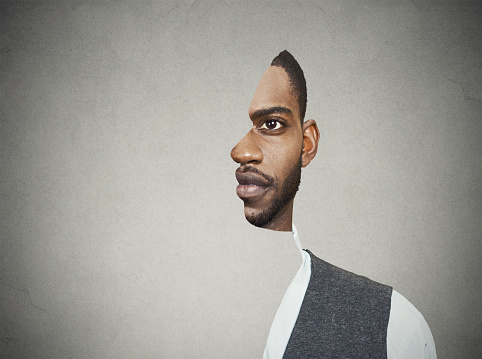
SUGGESTED LESSON PLAN
Most of your students feel sure that they are in touch with reality —that they are hearing, seeing, touching, tasting, and smelling things as they really are. But psychological science shows that what we experience as “reality” is constructed on a moment-to-moment basis in the brain, and different brains may experience the world differently.
This lesson plan is designed to help your students recognize that what they experience as “reality” is but one version of reality, and that their reality can be slightly, somewhat, or even radically different from the reality being experienced at the very same time and place by other people.
The unit is aimed at making three main points.
Day 1: Our experience of reality is based entirely on sensory information reaching the brain from outside and inside the body.
Day 2: Reality can be distorted when the brain is fooled into misperceiving information from the senses.
Day 3: Differing perceptions of reality can be based on cognitive, emotional, motivational, and sociocultural influences.
View the full collection: Busting Myths in Psychological Science
Suggested reading assignments
(Notice that, as is the case with other units, these assignments are not entire textbook chapters. Instead, they are chapter sections that are most likely to engage students’ interest and focus their attention on the psychological science associated with each unit’s high-interest myth. You can of course encourage students to read beyond the assignment if they wish!). Assign textbook sections that describe:
- basic sensory processes, especially vision and hearing (usually found in the sensation/perception chapter).
- the effects of expectancies, motivation, and other top-down processes on perception and memory (usually found in the sensation/perception, memory, cognition, and motivation/emotion chapters).
- the impact of personality characteristics on perceptions of events and people (usually found in the cognitive, personality, and abnormal psychology chapters).
- social perception, especially first impressions and prejudice (usually found in the social psychology chapter).
This unit will probably work best at the point at which you would normally deliver lectures on sensation and perception.
Near the end of the class just prior to the beginning of this unit, ask students for a show of hands if they believe that they are in touch with reality right now — that they know where they are, they know who they are, and that they are correctly perceiving the people and objects in the room with them. Most if not all students will raise their hands. (If any do not, you might want to ask them to say why; their responses might turn out to be valuable in teaching the unit). Below is an example of how you can respond:
“I see that everyone is pretty sure that they are in good reality contact, but I am telling you now that you are all wrong. What you are experiencing as reality is your own personal version of reality, and that it may or may not be the same as the reality being experienced right now by others around you. You might disagree with me, or might even think I am crazy, so I want to challenge you to use your critical thinking skills during the next three class sessions to consider my claim and decide whether or not I am right, or at least partially right.”
For the next class, assign the students to read those sections of the sensation/perception chapter that cover:
- the basics of sensory systems (e.g., sensory nerves, transmission of sensory information to and through the brain);
- some of the differences between sensation and perception (e.g., relatively raw sensory information vs. processed information that allows for recognition of meaningful patterns); and
- the role of top-down processes (e.g., expectations, motivation, culture) in interpreting and responding to sensory information.
DAY 1
You can begin this class session by reminding the students of the assertion you made at the end of the last class and ask for a show of hands by those who believe and do not believe you. Assuming some do and some do not accept your claim, you might lead the students in using critical thinking skills.
When asking the students, “How do you know where you are and what is happening right now?”, you’re likely to get such responses as, “I can see and hear everyone and I know how I got here, and I can feel my chair under me.”
As these comments continue, jot them down on a PowerPoint slide, blackboard, or whiteboard.
Now ask the students what all these comments have in common. If they don’t point it out themselves, draw their attention to the fact that their contact with reality comes from the sensory signals they receive from the outside world and from their own bodies.
To help the students appreciate all the sensory, perceptual, and cognitive processes involved in creating the reality that they take for granted as accurate, ask them — as they arrived for class — why nobody tried to sit in a chair that was already occupied. They will tell you that it was because they could see the other person sitting in the chair.
You can take this opportunity to give a mini-lecture (5 minutes or less) about how that simple decision took place:
“When light bounced off that other person and entered your eyes, it was converted into a pattern of nerve impulses that went to your brain. [To make even this mini-lecture more interactive, you can ask the class to identify the structures involved: the retina, the optic nerve, the thalamus, the visual cortex.] Your brain compared that pattern with patterns that you have seen before and that are stored in your memory. Your brain discovered that the pattern matched the mental category (or concept) that in your language is called “a person.” Your brain also retrieved from memory the knowledge that two physical objects cannot occupy the same space at the same time. It also retrieved its stored knowledge of the rules for proper social behavior in your culture and decided against trying to throw the other person out of the chair. Instead, it directed your eyes to search for an object whose pattern of light energy matched the mental category “empty seat” and then directed your muscles to sit you in it.
Point out that our ability to sense the world, perceive its characteristics, and act on the information we receive normally occurs so quickly and easily, and usually so unconsciously, that we take it for granted, and we tend to assume that the reality we experience is universal. Below is a possible way to present this point.
“The fact is that what we think of as objective reality is not so objective. Our perceptions of the world don’t depend entirely on the physical features of the things we see and hear and feel and touch and taste. The reality we experience also depends on the capabilities, limitations, and inherent characteristics of our sensory and perceptual systems. In other words, you think you are in touch with reality, but in fact you are only in touch with your reality. And the reality you experience can be quite different from the one experienced by someone else.”
Individual differences in equipment for sensing reality
Ask the class to consider the sense of taste, and show the tongue image provided here.
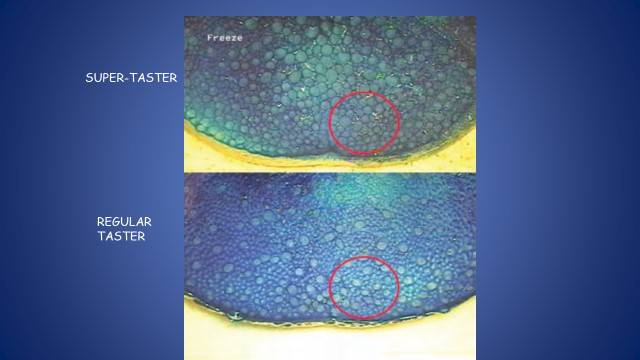
“As you can see on this slide, there are genetic differences in the number of taste buds (grouped into papillae) that we have on our tongues,” you can tell the students. “About 25% of the population have so few that they are called “nontasters,” while another 25% or so have so many as to be called “supertasters” (the rest of us are somewhere in between these extremes). So if you are especially sensitive to bitterness, as in kale, broccoli, soy products, and grapefruit, for example, you might be a supertaster. Genetic differences also help account for differences between people in their experience of spiciness. Some people experience “hot” peppers as spicy, but delicious, while others experience them as incredibly painful and impossible to eat. Ask for a show of hands from those who are especially sensitive to spicy foods.
Activity 1 To allow students to explore the genetic differences among them, and perhaps relate their spice-sensitivity to their anatomy, bring to class a supply of cotton swabs and a bottle of blue food coloring. Have the students paint the front of their tongues with a cotton swab soaked in the food coloring, distribute the dye by swirling their tongues around and swallowing, and then take a cell phone photo of each other’s painted tongues. The pink circles they will see against the blue background are papillae, each of which has about six taste buds buried in its surface. Have them count the papillae in the photos and report their findings. They should find wide individual differences in taste-bud density. Ask if the same people who reported spice sensitivity are also the ones with the highest papillae counts.
Activity 2 You can also have students actually determine whether they are supertasters by having them taste test strips available in a classroom kit, with instructions at https://www.amazon.com/Super-Taster-Test-Storage-Instructions/dp/B00BEZ5KJQ ]
DAY 2
Distorted reality: Perceptual Illusions
Demonstration 1 As an example of how the failure of sensory systems can create a false impression of reality, display the first of the “two monster” images provided in the PowerPoint materials, and ask the class which monster is larger. They will say the upper one is clearly bigger.
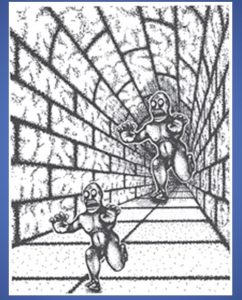
Now show the images without the background and the class will see that the two images are identical in size.

Now ask why the upper monster looked larger when it really wasn’t. If students apply what they have read about distance and depth cues, they will recognize that the converging lines in the tunnel created the impression that the upper monster was farther away. When the image of a “distant” object is the same size as the image of a “closer” one, our perceptual system has learned that the more distant one (in this case, the upper monster) must be bigger. When the distance cues are gone, the illusion disappears, too. (You might want to switch back and forth a few times to confirm this.)
Activity 3 This is a good time to ask the class to consider what would happen to a person who is unable to perceive depth and distance. The resulting discussion should lead to the conclusion that depth and distance perception is necessary for survival, since without it, people would misperceive reality and would be likely to walk into walls, fall off cliffs, or crash their cars.
If you wish to have the students engage further in the question of the survival value of our sensory/perceptual systems, you might ask them to say which sensory system they would be willing to do without, and why. They should be able to conclude that the touch sense is the most crucial aspect of reality because without it, it would be impossible to feel pain or even to swallow food or water without choking.
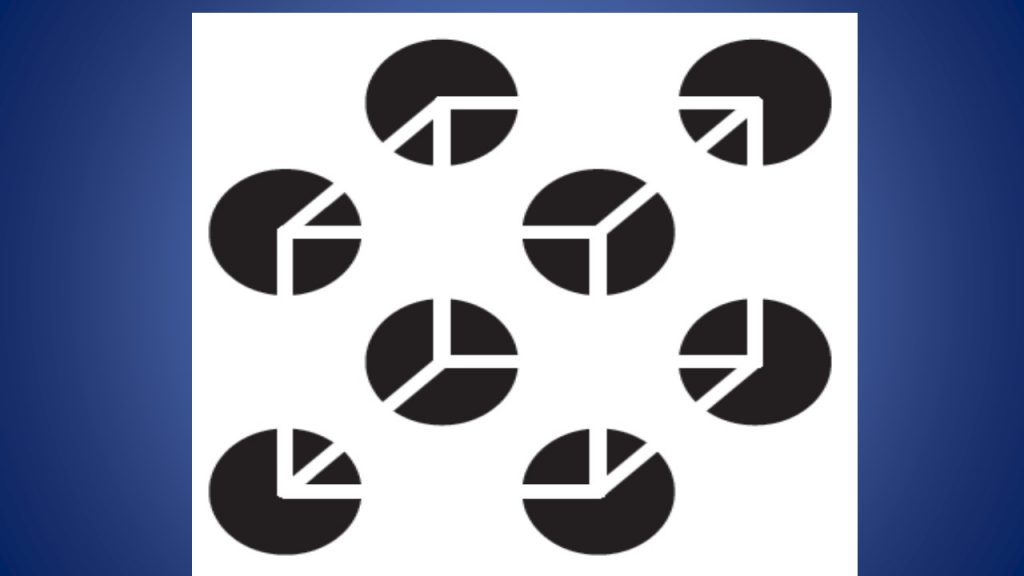
Demonstration 2 Point out now that survival also requires the ability to detect and recognize objects, such as a snake in the underbrush. So when the brain encounters sensory information that is not clear, it does its best to organize it as a recognizable object or sound source. To illustrate, show the “floating cube” image provided here and say something like: “Take a look at this image. The first thing to notice about it is that the raw sensations coming to your eyes from the slide are just a set of black circles with white lines in them. It is sensory garbage with no special meaning. But when your perceptual systems encounter meaningless patterns like this, they automatically try to make something meaningful out of them. This is a valuable feature of perception because it helps us figure out what we are looking at even when patterns are incomplete and confusing.
Ask the class what they see, and also help them recognize that different students may see different things. Most will see a cube, but some will see a complete cube floating in front of a set of holes while others will see parts of the cube “through” those holes. Some will see the cube from above, looking down at its top surface. Others will see the cube from the bottom, looking up at its bottom surface. These perceptions can shift back and forth, of course, so help the students recognize that their perception of reality can change from moment to moment and differ from that being experienced by the person next to them. Point out that their ability to change their perceptions at will confirms that we are not like video cameras that simply record a universal, objective reality. Instead, we play an active part in creating our own version of reality. (In the unlikely event that someone fails to see a cube at all, be sure to ask what they do see.)
Ask the class to notice that if they are able to see the cube as floating in front of a set of holes, they are creating a reality that does not exist.
“It may look to you as though the cube is complete, but if you look more carefully you will see that there are actually no lines connecting its various sections. You are hallucinating those connections. But this does not mean that you are crazy. It just means that your perceptual system is completing the pattern for you through a process called closure.” (Perhaps challenge the students to try NOT to see the phantom connections.)
How is reality shaped?
Now that you have highlighted the role of experience in creating various versions of reality, ask the class whether they think very young infants would experience the monster and floating cube illusions, and then ask them why or why not. This discussion will allow you to bring in the idea that perception, and the illusions based on it, develops over time, and that people who have had different kinds of sensory experiences, or have been deprived of certain sensory experiences, will perceive reality differently.
Ask the class to predict what happened in the case of M.M., a man who had been blind from early childhood, and then had his vision restored through surgery when he was in his 40s (Fine et al., 2003). As the discussion proceeds, you can work in the fact that people such as M.M. can immediately recognize simple objects and perceive movement, but they usually have problems with other aspects of perception. For example, M. M. adjusted well overall, but he still has difficulty with depth perception and object recognition. Often, as people move toward or away from him, they appear to shrink or inflate. Identifying common objects can be difficult for him, and human faces pose a particular challenge. To recognize individuals, he depends on features such as hair length or eyebrow shape. M. M. also has trouble distinguishing male faces from female ones and has great difficulty recognizing the meaning of facial expressions. He is unable to experience many of the perceptual illusions such as the monster illusion or the floating cube. His early blindness appears to have prevented his brain from fully developing the neural connections necessary for drawing accurate inferences about the visual world.
Now ask the class, “Would you predict that everyone with normal sensory systems will experience their reality in the same way? Why or why not?” If they don’t already mention the effects of differing visual environments, ask them to predict the kinds of environments that would lead to the strongest experience of the monster illusion, and to say why.
As the discussion proceeds, you can work in the fact that the ability to experience perceptual illusions depends on a person’s sensory history (Bremner et al., 2016). The monster illusion is strongest among those who grew up in the “carpentered world,” where seeing straight lines is an everyday experience and where there is a lot of variety in the distance at which objects are seen. Responses to illusions such as this are not as strong for people from rural areas of underdeveloped countries where the visual environment contains more irregular and curved lines than straight ones (Coren & Girgus, 1978).]
Demonstration 3 To illustrate the role of experience in the construction of reality, ask the class to look at the drawing of hunters and animals provided below and decide which animal is closer to the hunter in each case. Your students will almost undoubtedly choose the antelope.
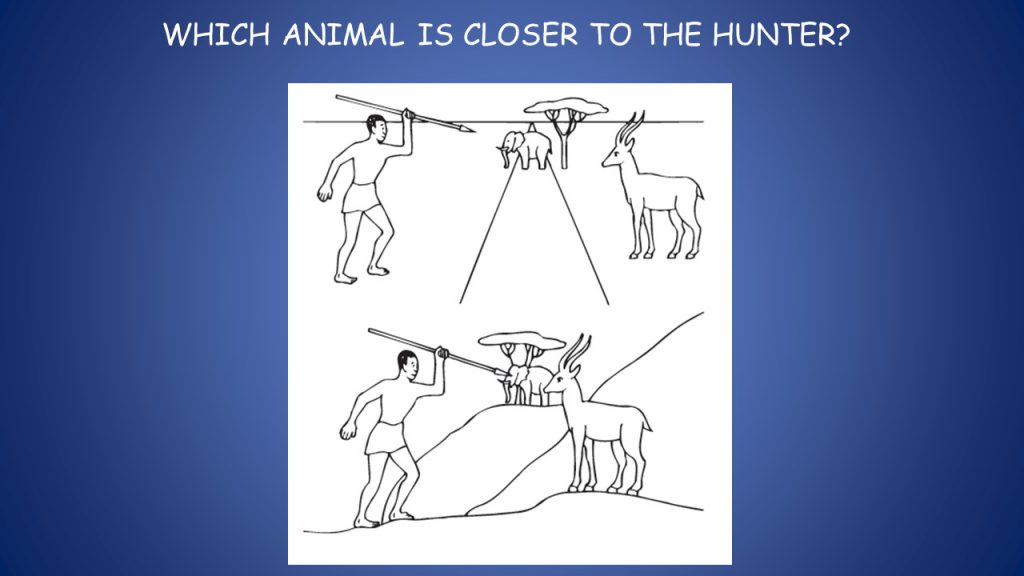
However, people who grow up in cultures where they had little or no experience with pictures of three-dimensional scenes tend to say that the elephant is nearer because it is closer on the page (which it is). It is your students’ experience with pictures that leads them to automatically interpret these images as having three-dimensional depth, so they will see the antelope as being closer when depth is considered.
Conclude by noting that although the structure and principles of human perceptual systems tend to create generally similar views of the world for all of us, our perception of reality is also shaped by experience — including the culture in which we live (Boland, Chua, & Nisbett, 2008; Cramer, Dusko, & Rensink, 2016).
If you want students to know the names and arcane details associated with the various illusions you have illustrated, you can assign them to read relevant sections of the sensation/perception chapter that cover perceptual illusions.
Day 3
The final day of this unit focuses on how and why people — even from the same culture, with normal sensory systems, and in the same situations — are still likely to perceive differing realities. Here is an example of an introduction:
“Just as supertasters experience foods differently than non-tasters because of genetics, each of us experiences the ‘same’ sights, sounds, events, and people differently depending on our learning histories, our personalities, our motivation, our emotional condition, and other factors.”
Where is reality in ambiguous stimuli?
Activity 4 Tell the students that you are going to play a 10-second audio clip containing information that is ambiguous, meaning that it can be interpreted in many ways. Ask the students to listen to the clip and write down any words that they hear.
The clip is a reverse-recording of the 70s rock band Queen playing “Another One Bites the Dust.” It was created as part of an experiment to determine if hidden (“back-masked”) messages appear in rock music when played backwards (Vokey, 2002; Vokey & Read, 1985).
After having the students exchange their written responses, ask them to read the responses aloud. Some students will have heard no words at all; others will report hearing some disjointed words or word fragments, while still others will say that they heard the word “marijuana.” Use this variation in responses to show that, even though everyone heard the same ambiguous sounds, the same objective reality, their perceptual systems organized the sounds in differing ways, thus creating their personal edition of reality. Then ask the students to consider and discuss what top-down processing factors (e.g., native language, bilingualism, recent life experiences, familiarity with drugs, personality, creativity, imagination, motivation for the task) might have led to the differing responses.
You might also want to mention here that the tendency for different people’s perceptual systems to organize ambiguous sensory input in different ways is the basis for projective tests such as the Rorschach inkblot test, which are designed to reveal aspects of personality based on what people see when they try to make sense out of ambiguous images.
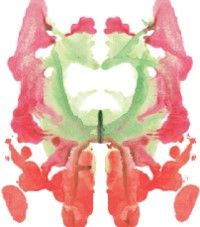
Activity 5 Ask what the students see in the inkblot provided here. You may or may not want to discuss the reliability and validity of projective tests, but at least point out that, as with the audio clip, each student is experiencing a different version of reality as they look at the inkblot.
Expectations of reality
Now play the backwards clip again, but this time ask the students to listen for “It’s fun to smoke marijuana.” Virtually everyone will now clearly hear that sentence. Ask the students to discuss what this suddenly clear sentence means about reality. Was the sentence “really” in the clip all along, even though most people failed to hear it? Did it only become real when they were led to expect it? Or what?
Play the clip a final time, but ask the students to try not to hear the sentence. It will be impossible for them to do so, which gives you the opportunity to begin discussing the role of expectations and attention in our experience of reality, as illustrated below.
“So what we expect can change our perception of reality, and once we have an expectation about the world, it is very difficult to perceive it differently. The power of expectation applies not only to sights and sounds, but to our perceptions of people. If we have heard good things about a professor, or a doctor, or even someone we are about to go out with socially, we are more likely to perceive them in a positive way than if we have heard bad things about them.”
Ask the class to think of and discuss examples of this phenomenon and how it affects social interactions. They should easily recognize that expectations based on prior information can affect first impressions, and are at the root of most forms of prejudice, either for or against members of particular groups.
Attention and reality
You can finish this unit by using the videos provided here to show that our experience of reality also depends on where we direct our attention. If we do not pay attention to something, then it does not exist for us. (This is called inattentional blindness). Here’s a model explanation.
“Let’s finish up today by focusing on the role of attention in our experience of reality. If we do not pay attention to something, it does not exist, at least not for us. This is often a good thing because it allows us to concentrate on what we are reading or watching or hearing without being distracted by traffic noise, nearby conversations, or people walking by. But we also have to be able to divide our attention enough to perceive other aspects of reality that are important for survival. If we can’t do that, or if we can’t do it well enough, we can become blind to important parts of our world. This phenomenon, called inattentional blindness, can be so complete that when people are texting or talking on a mobile phone while driving a car or even just walking, they may fail to see and hear what is going on around them.”
Demonstration 4 As examples, you can play the South African safety video provided below, and show the associated statistics on the two other slides provided. In the US, about 3,500 people are killed and about 391,000 are injured every year due to distracted driving accidents. That’s about 10 deaths and 1,100 injuries per day. (National Highway Traffic Safety Administration, 2018).
Activity 6 Begin the activity with an explanation such as this:
“To show you how easy it is for inattentional blindness to interfere with our perception of reality, I am going to play a video of a group of people passing two basketballs. Four of them are wearing black and four are wearing white. Your task is to count the exact number of times the people in white pass the ball. It is an easy task, but to come up with an accurate count, you will have to focus your attention entirely on the players in white. If you cannot do that, you will lose track of the count.”
Of course, the real goal here is to make the students “blind” to the appearance of a moonwalking bear passing through the scene. Its presence is noted in a title midway through the video, and then the scene rewinds and replays so that once your students are no longer distracted by trying to count passes, they will easily see the bear.
Ask the class how many saw the bear the first time and how many saw it only after they were alerted to it. The fact that some students missed the bear the first time indicates that some people are more prone to inattentional blindness than others. To ease any student concerns, explain as follows:
“If you didn’t see the bear the first time, you are not alone. In a study based on a similar video, more than half of the people who watched it were concentrating so intently on the counting task that they failed to see a guy in a gorilla suit walk onto the basketball court, beat his chest, and walk off.”
The same researcher, Dan Simons (Simons & Ambinder, 2005), has shown that attention can be so focused that we can fail to notice even dramatic changes in our environment. On his website at http://www.dansimons.com/videos.html, you will find film clips showing that this phenomenon, called “change blindness,” can be so extreme that people may not realize that the person they are talking to has been replaced by another person — even if the second person looks nothing like the first one. These clips are under copyright, so they are not provided here, but you can play them in class directly from Simons’s website if you have a live Internet connection.
You can end the unit as follows:
“Ok, so I hope i have convinced you that we humans do not always have a firm grasp on reality, simply because we are always creating our own version of it based on how our sensory and perceptual systems work, what we have learned to expect, and where our attention is focused.”
All visual materials can be found here.
References
Bremner, A.J., Doherty, M.J., Caparos, S., de Fockert, J., Linnell, K.J., & Davidoff, J. (2016). Effects of culture and the urban environment on the development of the Ebbinghaus illusion. Child Development, 87, 962-981.
Coren, S., & Girgus, J. S. (1978). Seeing is deceiving: The psychology of visual illusions. Hillsdale, NJ: Erlbaum.
Fine, I., Wade, A. R., Brewer, A. A., May, M. G., Goodman, D. F., Boynton, G. M., et al. (2003). Long-term deprivation affects visual perception and cortex. Nature Neuroscience, 6, 915–916.
National Highway Traffic Safety Administration. Traffic safety facts: distracted driving 2016. Washington, DC: US Department of Transportation, National Highway Traffic Safety Administration, April, 2018. Publication No. DOT-HS-812-517.
Simons, D. J., & Ambinder, M. S. (2005). Change blindness: Theory and consequences. Current Directions in Psychological Science, 14, 44–48.
Vokey, J. R. (2002). Subliminal messages. In J. R. Vokey & S. W. Allen (Eds.), Psychological sketches (6th ed., pp. 223–246). Lethbridge, Alberta, Canada: Psyence Ink.
Vokey, J. R., & Read, J. D. (1985). Subliminal messages: Between the devil and the media. American Psychologist, 40, 1231–1239.





Comments
Thanks for a lot for gathering these ideas and materials together. I find that grad students need a refresher and review (and first exposure) to these experiences of differently perceived realities.
APS regularly opens certain online articles for discussion on our website. Effective February 2021, you must be a logged-in APS member to post comments. By posting a comment, you agree to our Community Guidelines and the display of your profile information, including your name and affiliation. Any opinions, findings, conclusions, or recommendations present in article comments are those of the writers and do not necessarily reflect the views of APS or the article’s author. For more information, please see our Community Guidelines.
Please login with your APS account to comment.